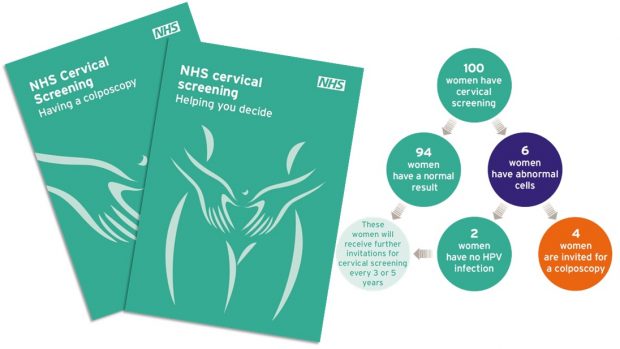I read an interesting article recently. In it, Dr Steven Hatch, a specialist in infectious diseases at the University of Massachusetts Medical School, writes about uncertainty in medicine and why patients – and doctors – need to get better at weighing up the risks and benefits of a test or treatment.
The title of his book – Snowball in a Blizzard: A Physician's Notes on Uncertainty in Medicine – is based on the observation among radiologists that finding a tumour can be like identifying a snowball in a blizzard. No matter how experienced you are, it’s difficult to get it right every time.
This got me thinking about screening and its balance of risks and benefits. Uncertainty and anxiety can come from a positive screening test (which usually indicates if you’re at risk of the condition being screened for and need further confirmatory tests to be sure). We also know screening tests can have false positives and false negatives. It is for these reasons that we are passionate advocates of informed choice. People need appropriate information to help them make the choice that is right for them. As screening professionals, we cannot make assumptions about people’s choices or impose our values and choices on them.

A brief history of informed choice
You can trace back the concept of informed choice to an incident in Kent and Canterbury Hospital in 1996 where serious problems with the cervical screening programme led to the early signs of cancer being missed in 8 women who sadly later died. A subsequent report made a number of recommendations including that the information given to women should be more balanced and better reflect both the benefits and harms of screening. As a result, the Primary Care Education Unit at Oxford University, then led by Dr Joan Austoker, was commissioned to produce new leaflets for the breast and cervical screening programmes. These were published in 2001 and explicitly recognised informed choice for the first time.
The debate about the benefits and risks of breast screening led to the independent review of screening led by Professor Sir Michael Marmot in 2012. This concluded that breast screening does save lives but at the expense of some overdiagnosis and overtreatment. As a result, the King’s Heath Partners were asked to produce a new set of leaflets based on the “informed choice in cancer screening” process they created. This included citizen juries to understand what women wanted to know about screening and how they wanted to be communicated with.
Dr Anne Mackie wrote an article on the main PHE blog some time ago about informed choice that quickly became our most commented on and discussed blog. So it clearly hit a nerve!
New UK-wide public information group
Why am I telling you this? Well you may remember us writing about the recommendations from the Parliamentary Science and Technology Committee, which reviewed health screening in the UK and came up with a number of very sensible proposals about strengthening the role of the UK National Screening Committee and the delivery of screening programmes. A key recommendation was the creation of a new group from the 4 UK nations to co-ordinate the development of public and patient information. This group recently met for the first time.
Its aims include:
- agreeing a common definition of “informed choice” within the context of screening programmes
- producing a standard method for developing and evaluating public information
- sharing and adapting public information resources between the 4 UK countries to reduce duplication of effort
At the first meeting there was recognition that enabling people to make informed choices in screening is complicated and difficult to do well. We established at the outset that we need to be open and transparent in how we go about achieving the aims of the group and how public information is produced. We also agreed with the science and technology committee that we should develop information in house rather than commission external organisations. But it’s vital that relevant experts, stakeholders and members of the public feed into this process and help assure the quality of the final product.
The first tasks of the new group are to identify a number of experts to feed into our discussions and to log all the resources we’ve produced within each country so we can start sharing the best of these rather than creating things again from scratch.
I’ll continue to blog about the work of this group and the progress we’re making. Right now I’m off to buy the Steven Hatch book.
UK NSC blog
The UK NSC blog provides up to date news from the UK National Screening Committee. You can register to receive updates direct to your inbox, so there’s no need to keep checking for new articles. If you have any questions about this blog article, or about the work of the UK NSC, please contact the UK NSC helpdesk.
Leave a comment